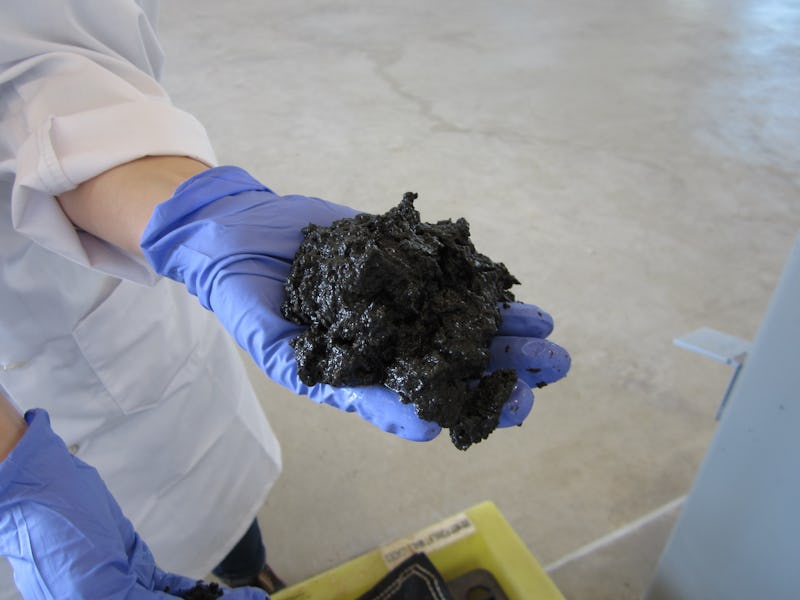The Government Wants to Turn Human Waste Into Biocrude Oil
We can achieve in minutes that otherwise takes millions of years.

Every time you flush the toilet, a complex system of pipes carries the waste to a treatment facility that separates clean water from sewage.
On Wednesday, the Pacific Northwest National Laboratory announced plans to produce biocrude oil, phosphorous, and other chemicals from the foul sludge that’s left over from the wastewater treatment process.
In a few years, systems like this might create a perpetual loop to help mitigate the fallout when oil can no longer be drilled from the Earth.
The system for extracting crude oil from human waste was funded by the U.S. Department of Energy’s Bioenergy Technologies Office. The researchers working on this project said that it’s actually quite simple: Sludge is forced through a tube at 3,000 pounds per square inch of pressure into a reactor operating at 660 degrees Fahrenheit. That’s all.
The researchers estimate that wastewater facilities treat 34 billion gallons of sewage each day; that’s enough to produce 30 million barrels of oil per year. (They also said that “a single person could generate two to three gallons of biocrude per year,” which is at once interesting and discomfiting.)
“The technology, hydrothermal liquefaction, mimics the geological conditions the Earth uses to create crude oil,” PNNL’s researchers explained, “Using high pressure and temperature to achieve in minutes something that takes Mother Nature millions of years.” This could make pulling crude oil from waste an alternative to digging it from the Earth.
It could also help avoid a fuel shortage. Everybody poops — that’s why others have tried to use waste as a renewable energy source. PNNL could succeed where they have failed by working on a large scale instead of going after individuals.
That's the stuff.
This system wouldn’t eliminate the other problems with fossil fuels, though, and that’s where other sources of clean energy come in. Solar is increasingly popular, and so is wind.
PNNL’s researchers said Metro Vancouver, a group of British Colombian authorities, plans to build a demonstration plant for this process. The project is expected to cost between $8 million and $9 million (CAD). Work will begin in 2017 and the plant will open in 2018; there’s no word on when this system might also be used in the United States.